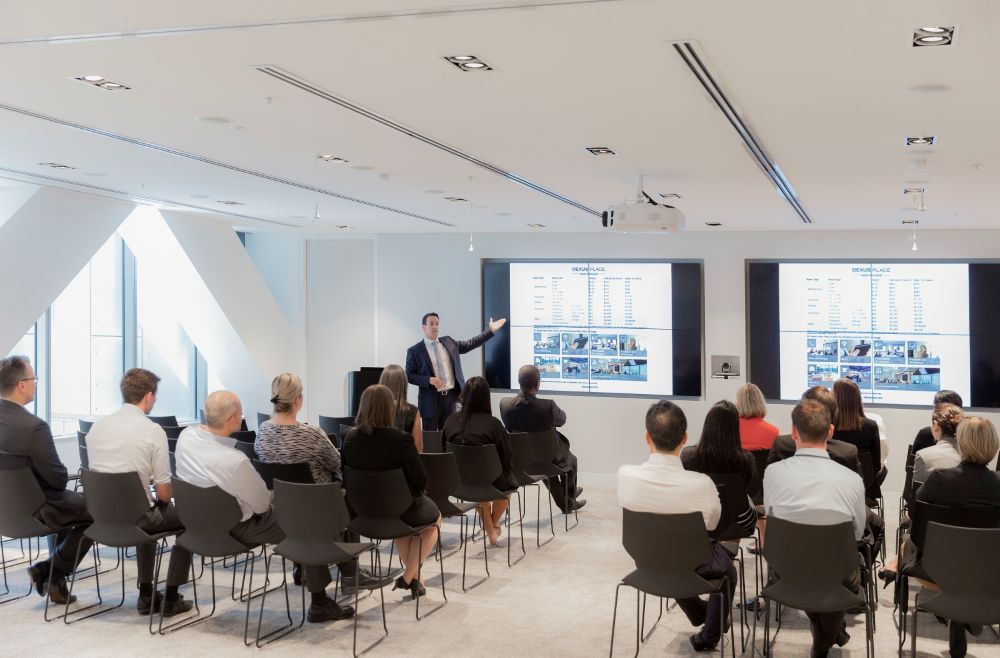The freelance journey can feel like a rollercoaster – exhilarating when projects are flowing, but a bit daunting during a dry spell. If you're building a sustainable freelance gig in Australia, one of the most critical steps is to iron out a fair and profitable pricing model.
This guide will provide practical advice on how to price your freelance services, ensuring you strike the right balance between profit and appeal in the Australian market.
The Value of Your Services Is More Than Just an Hourly Rate
So, how much should a freelancer charge for their services? Your freelance rate goes far beyond simply covering your time. It’s about reflecting your unique experience, specialised expertise, and the tangible value you bring to your clients.
A cautionary note: keeping your fees artificially low, even after five or seven years in the industry, can inadvertently position you as offering entry-level work. This undervalues your refined skills and the depth of knowledge you’ve accumulated.
Key Factors Influencing Your Freelance Rates in Australia
When determining how much to charge for freelance services, a thoughtful approach to several key factors will lead to more sustainable and competitive rates in the Australian market.
1. Experience and Expertise
Your years of experience, coupled with specialised skills and a strong portfolio, genuinely justify higher rates. Investing in continuous learning and professional development, such as certifications or advanced training, will further increase your earning potential as a freelancer. This commitment to growth directly translates into more value for your clients.
Beyond your expertise, remember to factor in all your business expenses when determining how much to charge. This includes everything from software subscriptions and equipment depreciation to professional development, superannuation contributions, insurance, and taxes. These essential costs must be covered before you even begin to consider your personal income.
2. Industry Standards and Market Rates
To ensure your pricing is competitive yet fair, it's crucial for freelancers to research average rates for your specific services within the Australian market. This step is vital in helping you understand how much to charge for freelance projects.
Here's a snapshot of typical freelance rates in Australia, by industry, though these can vary significantly based on experience, location, and specific role:
- Content Writer: AU$35 - AU$75 per hour
- Graphic Designer: AU$50 - AU$80 per hour
- Web Developer (Front-end/Back-end): AU$70 - AU$150+ per hour
- Social Media Manager: AU$50 - AU$100 per hour
- Consultant: AU$65 - AU$300+ per hour
Beyond these general figures, leveraging online resources, specific industry reports (like those from professional associations), and networking with fellow freelancers are excellent ways to gauge accurate competitive pricing for your services.
3. Project Complexity and Scope
More complex projects, those demanding niche skills, extensive research, or longer timelines, should always command higher fees. When a project requires a significant investment of your time, involves many stages, or has multiple moving parts, it's certainly reasonable to consider a per-project pricing model rather than an hourly rate.
A per-project pricing model means you charge a fixed fee for the entire scope of work. This provides clarity for the client and ensures you're compensated for the overall value delivered, rather than just the hours.
4. Client Type and Budget
The size and financial capacity of a client can certainly influence their budget expectations. For instance, a small startup might have different resources compared to a large corporation. As a freelancer, it’s a delicate dance to discern client budgets without compromising your true value. It's not always about matching their lowest offer, but understanding their perceived value of your services and demonstrating a clear return on investment for their spend.
How to Price Your Freelance Services
Deciding how to price your services as a freelancer is a critical step for sustainable success. There isn't a single 'right' way; the best method often depends on the project, the client, and your personal work style. Let's explore the most common models used by freelancers in Australia.
Hourly Rate
Calculating how much hourly rate you should charge as a freelancer involves more than just pulling a number out of thin air. You need to factor in your desired annual income, an estimate of your actual billable hours, and all your business overheads. This model is often most appropriate for unpredictable projects or consulting work where the scope might evolve.
Benefits:
- Simplicity: Easy for both you and the client to understand.
- Flexibility for Scope Changes: You're compensated for every hour worked, even if the project scope expands.
- Fair for Unpredictable Projects: Ensures you're paid for the actual time invested, especially when the end-point isn't clear.
Drawbacks:
- Caps Earning Potential: You're trading time for money; as you become more efficient, your per-project earning might decrease.
- Client Focus on Hours: Clients may scrutinise hours rather than the value of the outcome.
- No Reward for Efficiency: Becoming faster or more skilled means you might earn less for the same result.
Hourly Rate
With a project-based model, you offer a single, all-inclusive price for the entire project, irrespective of the actual hours taken. This approach demands a crystal-clear project scope and detailed proposals, setting expectations upfront with the client before you even pitch to clients.
Benefits:
- Client Certainty: Clients know the exact cost upfront, aiding their budgeting.
- Rewards Efficiency: If you complete the project faster due to your expertise, your effective hourly rate increases.
- Focus on Value/Outcome: The discussion shifts from time spent to the specific deliverable and its benefits.
Drawbacks:
- Risk of Underpricing: If the project takes longer than anticipated, your effective hourly rate can plummet.
- Scope Creep: Without strict management, the project's requirements can expand beyond the initial agreement, leading to unpaid work.
- Requires Accurate Estimation: Needs extensive experience to accurately predict the time and effort required for a project.
Retainer-Based
Retainer agreements involve clients paying a regular, fixed fee for ongoing services or guaranteed availability over a set period, typically monthly. This model is ideal for recurring tasks or consistent support, offering a predictable income stream for the freelancer and consistent access to your expertise for the client.
Benefits:
- Consistent Income: Provides predictable revenue, making financial planning easier.
- Smoother Cash Flow: Eliminates the feast-or-famine cycle common in freelancing.
- Deeper Client Relationships: Fosters a long-term partnership, allowing for better understanding of client needs.
- Reduced Sales Effort: Less time spent constantly searching for new projects.
Drawbacks:
- Assumed Discount: Clients might expect a lower hourly rate due to the ongoing commitment.
- Potential for Scope Creep: Clients might over-utilise your services without clear boundaries.
- Less Portfolio Diversity: May limit your ability to take on varied projects.
Value-Based Pricing
Value-based pricing means charging what your services are genuinely worth to the client, based on the outcomes and benefits they receive, rather than just the time or effort involved. It's about demonstrating the return on investment you provide.
Benefits:
- Highest Earning Potential: Allows you to capture a larger share of the value you create for the client.
- Focus on Results: Aligns pricing with the client's ultimate goals and achievements.
- Positions You as a Partner: Elevates your role from a task-doer to a strategic problem-solver.
Drawbacks:
- Difficult to Quantify: Requires strong skills in demonstrating and articulating the value of your work.
- Client Perception: Not all clients understand or are open to this pricing model.
- High Risk: If the project doesn't deliver the expected value, it can damage the client relationship.
Price with Confidence, Freelancer

TWP Margaret Street Lounge
As an Australian freelancer, mastering your pricing strategy is a journey that evolves with your experience and the market. Beyond setting your rates, remember the fundamental pillars of a sustainable freelance career: clear contracts, professional communication with clients, and a commitment to continuous self-improvement in your chosen field.
Crucially, the environment in which you work significantly impacts your productivity and professionalism. A dedicated, professional setting for freelancers can make all the difference, providing the structure and focus needed to deliver high-quality work. Many coworking spaces in Australia offer ideal environments for freelancers to work effectively and network.
Solutions like hot desk rentals provide incredible flexibility and access to professional amenities like business-grade internet, meeting rooms, and printing facilities, all without the financial commitment of a traditional office lease. For instance, Dexus Place by Margaret Street is a fantastic example of a supportive hub in Sydney's CBD, offering a premium and vibrant space where freelancers can thrive and connect.
So, go forth and embrace your worth. Explore The Work Project's coworking spaces for maximum productivity during your freelance gigs and elevate your professional presence in Australia.





